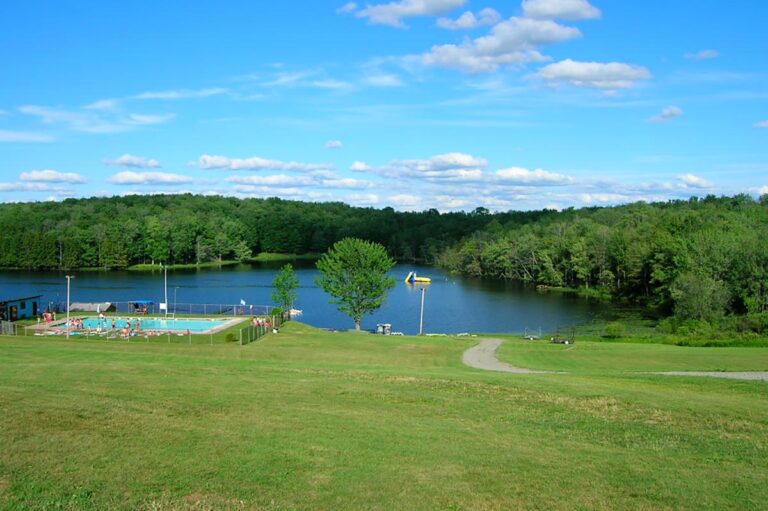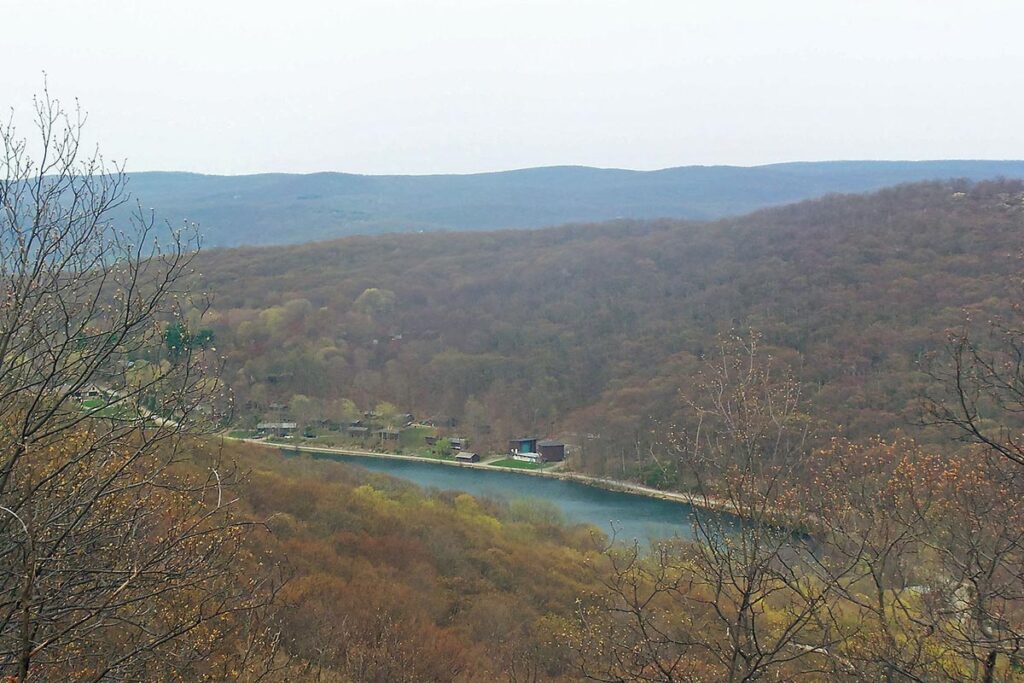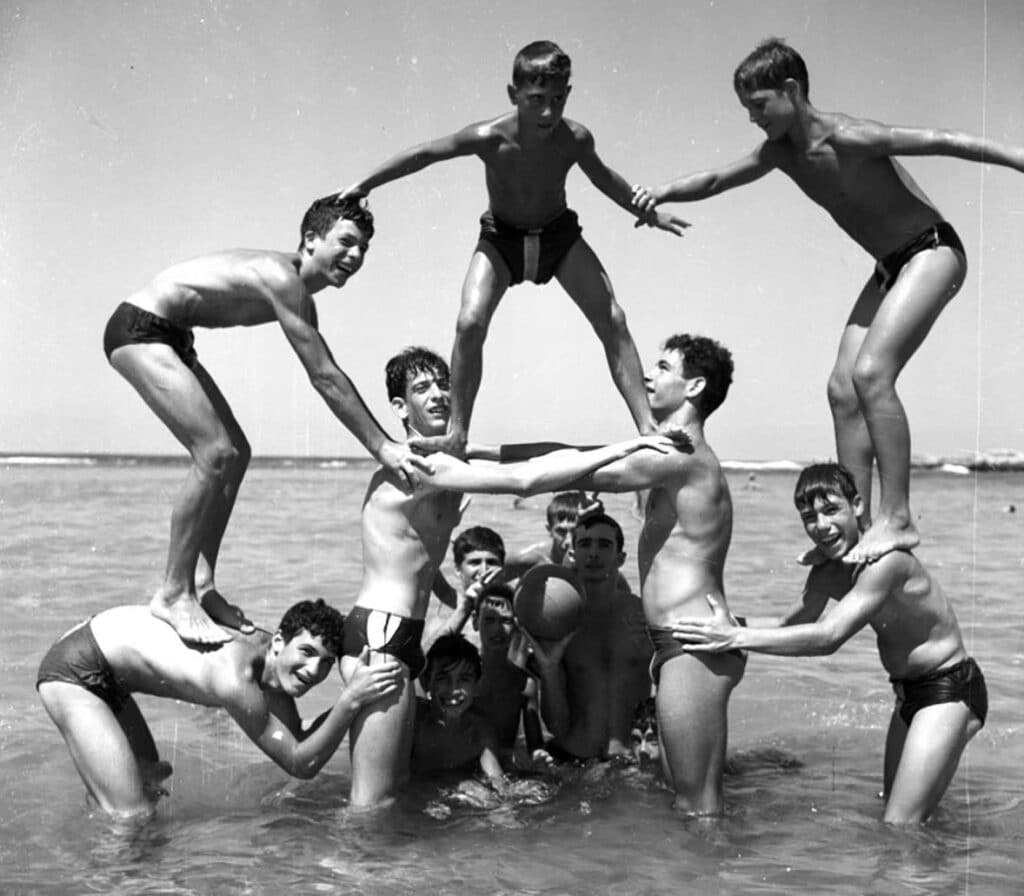
Attending Jewish summer camp is as much a part of the American-Jewish experience as taking embarrassing bar mitzvah photos and bumbling through your first Hillel function.
According to Sandra Fox’s new book, “The Jews of Summer,” a staggering 43% of Jews have attended summer camp, making it almost a rite of passage.
In the book, one of Fox’s main arguments is that summer camp’s crucial role in shaping Jewish youth was by design.
Following a mass Jewish migration to the United States in the late 19th and early 20th centuries, Jewish leaders wanted to find a way to connect young Jews to their heritage. Summer camp was their highly successful experiment to keep Jewish culture alive.
Whether you’re a summer camp enthusiast or are someone who can’t stand how summer camp lovers only talk about camp, here’s a deeper dive into the history of Jewish summer camps.
How did Jewish summer camps start?

Picture this: It’s the late 19th century, and the Second Industrial Revolution is sweeping across America. Innovation and industrialization are at an all-time high, with factories, railroads and electricity transforming daily life.
Amid this backdrop, a wave of Ashkenazi Jewish immigrants are finding their way to America, drawn by its promise of opportunity. They make their homes in the heart of these transforming cities, settling in crowded tenements.
Life in these urban environments was not always idyllic — polution and diseases posed significant threats.
Charity-sponsored summer camps were advertised to protect kids from polio. Eager to provide their children with respite from urban pollution and promote their physical and mental health, Jewish parents began to see the value in sending their sons to sleepaway camps.
In 1893, a Jewish organization founded Camp Lehman, the first sleepaway camp in New York. This was quickly followed by several other charity-sponsored camps, like Surprise Lake Camp, founded in 1902 for lower-income boys from Manhattan’s Lower East Side.
Although most of these early summer camps were not explicitly Jewish, they became informal hubs of Jewish culture and thinking, shaped by the predominantly Jewish demographics of their campers and founders.
In addition to wanting to give their kids a respite from difficult circumstances, Jewish parents had another motivation for enrolling them in camp: to help them assimilate into American culture.
“Camps were agents of Americanization: teaching immigrant kids how to play American sports and encouraging them to develop a taste for American cuisine and enjoy popular American pastimes,” Jonathan Krasner, a professor of Jewish education at Brandeis University, said.
There was another factor that propelled the growth of Jewish summer camps — at the turn of the 20th century, antisemitism was on the rise. Universities began implementing anti-Jewish quotas and many businesses refused to hire Jews.
“Jewish summer camps came about because Jews were often blocked out of other vacation options, either rejected due to antisemitism and nativism or finding the camps unaccommodating to their religious and cultural needs like kosher or kosher-style food,” Fox wrote.
So, camps provided children with an escape from the city’s pollution and disease, while also creating an environment of inclusion and cultural pride amid rising antisemitism.
The evolution of camp: From ideological to Jewish movements

The tradition gained momentum in the early 20th century, with tens of thousands of Jewish families sending their kids to sleepaway camp.
Middle and upper-class Jews began sending their children to privately-run camps, while the prevalence of charity-sponsored camps continued to be a vital resource for low-income Jews.
As the popularity of camps surged, urban Jewish boys tended to go to whichever camp their parents could afford or get a scholarship spot in.
Each of these camps were flavored by their different ideologies and values. Camp Kinderland, located in Tolland, Mass., founded by Jewish union activists, instilled the value of social justice in campers.
Camp Massad, which was in the Poconos until it shuttered in 1981, taught Hebrew to its campers, championing Zionism in the years before Israel’s founding.
As the 20th century progressed, Jewish summer camps began to diversify. While Yiddish, socialist and Zionist Jewish summer camps continued to exist and thrive, Reform and Conservative movements started their own camps in the 1940s.
These camps created experiential learning environments, involving campers in leading and participating in their own Jewish activities. Campers learned about Judaism through activities and music rather than more formal lessons.
As explicitly Jewish camps, they also instilled the values and practices of their respective branches of Judaism. Conservative camps focused on more strict Jewish education and traditional styles of prayer, while Reform camps centered more on role-playing activities, informal education and guitar-led song. Both focused on integrating Jewish songs, prayers, texts and language into everyday life.
“The physical location and isolation of the camp, deep within the woods and far from the child’s family and community” provided an ideal environment to instill ideas about Jewish identity, historian Nancy Mykoff explained.
Jewish summer camp: A response to assimilation
As the generations rolled on, American Jews steadily rose to the middle class. Many Jewish soldiers returning home from World War II were offered college scholarships and housing loans, opportunities that were exclusive to white veterans.
With this upward mobility, American Jews began to move from cities to the suburbs, where Jewish communities were less densely concentrated. Synagogues and their respective social clubs became the center of Jewish life in each community.
According to Fox, this time was considered a “golden age” of American Jews, characterized by social mobility and a renewed focus on children and teenagers. This “child-centered Judaism,” as sociologist Herbert Gans called it, led to a further expansion of summer camps.
However, with the move to the suburbs, assimilation and intermarriage were on the rise. Jewish leaders feared that American Jews were losing their direct connections with their heritage and risked becoming overly Americanized.
Jewish camps embraced co-educational activities and campgrounds to encourage teenage Jews to mingle, historian Abigail Van Slyck wrote in her book, “A Manufactured Wilderness: Summer Camps and the Shaping of American Youth.”
Jewish institutions began pumping more money and effort into establishing and maintaining Jewish summer camps. Camps became places where children could experience Jewish traditions and culture solely around other young Jews, in an era of increasing Americanization.
“By the 1960s, Jewish leaders were fully committed to the project of keeping teens as campers [and then counselors] as long as possible, with hopes of making a lasting impact on them before they left the communal nest and went off to college,” Fox wrote.
The impact of the Holocaust and the founding of Israel
Major historical events, such as the Holocaust and the founding of the State of Israel, deeply influenced the trajectory of Jewish summer camps.
According to Fox, the massive loss of Jewish life during World War II sparked fears among Jewish leaders that the rich, “authentic” Jewish culture that had flourished in Europe might be lost forever, particularly as American Jews moved further away from their traditional shtetl roots.
Jewish leaders began to see themselves as stewards, carrying the torch of Judaism and Jewish culture into the future.
Camps responded to this cultural crisis by integrating the memory of the Holocaust into their education. Campers created memorial statues, offered prayers for the six million Jews who perished, and planted trees in their honor. These activities helped campers empathize with the European Jews’ experiences and gave them a deeper understanding of their cultural heritage.
The founding of the State of Israel in 1948 also had a significant impact on Jewish summer camps. Before its establishment, many camps did not have any education centered around Israel.
Although Zionist camps taught about the land Israel, and even prepared young people for the life and labor of living on a kibbutz, the Conservative and Reform movements’ camps were slower to adopt Zionist curriculums, becoming more openly Zionist only in the 1950s.

Early camps had to balance their teachings of Judaism with American nationalism. This led to hot debates about the role of Israel at Jewish summer camps.
“There was considerable confusion and ambivalence at first about what to do with Israel: whether to raise an Israeli flag, not because they were anti-Zionist, but because American Jews had been thinking about proving their loyalty to America for many generations,” Fox noted.
As a way to resolve this, many camps began to incorporate Israeli symbols into camp life, in much the same way many U.S. camps of the era adopted Native American symbols and names.
Legacy of Jewish summer camps
According to recent surveys, Jewish summer camps have largely achieved their goals. A 2008 study found that those who attended Jewish camp were more likely to participate in Jewish practices as an adult, such as going to synagogue, donating to Jewish charities, lighting Shabbat candles, and marrying a Jewish spouse.
Those who attended Jewish summer camp were 21% more likely to say that being Jewish is an important part of their identity compared to those who did not attend camp. And a 2010 study found that two-thirds of Jewish leaders attended Jewish summer camp.
The takeaway is this: The influence of Jewish summer camps extends beyond individual participants, shaping the broader American-Jewish identity and culture. Whether one attended a Jewish summer camp or not, its impact on American-Jewish identity and culture is undeniable, making it a fundamental part of the American-Jewish story.
Originally Published Jul 21, 2023 02:42PM EDT
